Aquamarine
Aquamarine is a beautiful gemstone and a variety of the mineral beryl. It is highly prized for its stunning blue to greenish-blue color, reminiscent of the clear waters of the sea, which gives it its name “aquamarine” (aqua meaning water and marine meaning sea). Aquamarine is a popular gemstone used in jewelry and is also the birthstone for the month of March.
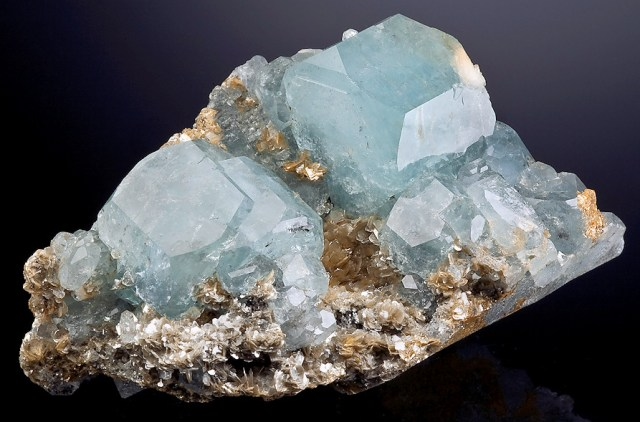
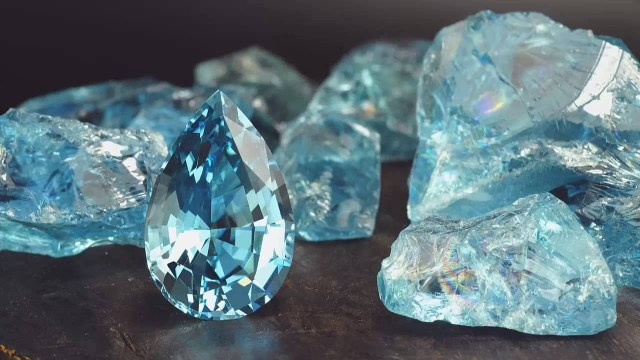
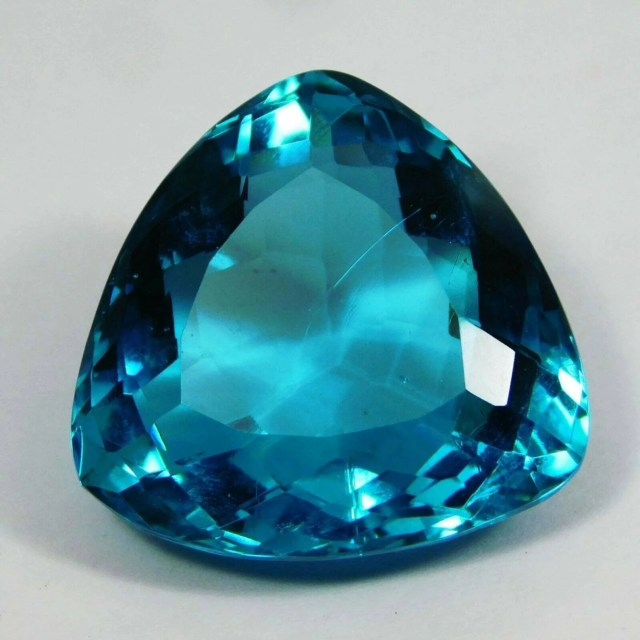
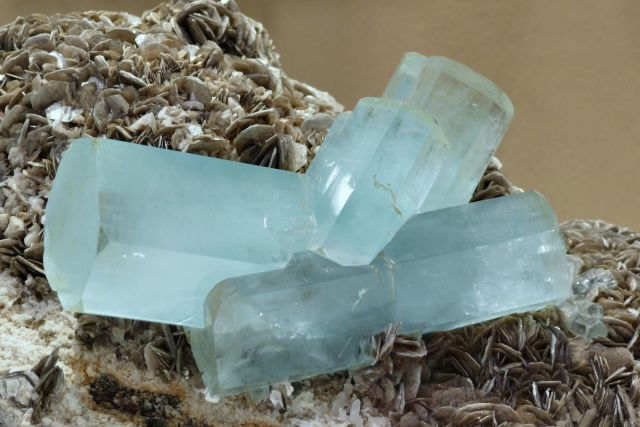
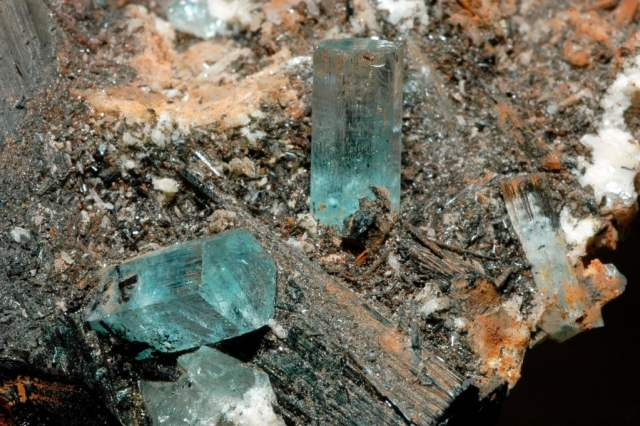
Here’s an overview of some key information about aquamarine:
Chemical Composition: Aquamarine is a variety of beryl, composed of beryllium aluminum silicate with the chemical formula Be₃Al₂Si₆O₁₈. It belongs to the same mineral family as emerald, morganite, and heliodor.
Color and Transparency: Aquamarine is known for its blue to greenish-blue hues, which can vary in intensity from pale to vibrant. The color is due to trace amounts of iron present in the crystal structure. The gemstone can be transparent to translucent, with higher-quality stones exhibiting greater transparency.
Crystal System: Aquamarine crystallizes in the hexagonal crystal system. It typically forms prismatic crystals with a hexagonal cross-section, which can vary in size from small to large.
Hardness: On the Mohs scale of mineral hardness, aquamarine has a hardness rating of 7.5 to 8. This makes it a relatively durable gemstone, suitable for everyday wear.
Occurrence: Aquamarine is found in various locations around the world. Notable sources include Brazil, Madagascar, Nigeria, Zambia, Pakistan, and Russia, among others. The quality and color of aquamarine can vary depending on the source.
Symbolism and Meaning: Aquamarine has been associated with various symbolic meanings throughout history. It is often regarded as a symbol of youth, hope, and eternal life. The gemstone is also believed to promote calmness, clarity, and emotional balance.
Uses: Aquamarine’s primary use is as a gemstone in jewelry. It is faceted and cut into various shapes to be set in rings, earrings, necklaces, and bracelets. Aquamarine’s beauty and popularity make it a sought-after gemstone in the jewelry industry.
Care and Maintenance: Aquamarine is relatively durable, but it can still be susceptible to scratches and damage from rough handling or sharp blows. To care for your aquamarine jewelry, it is advisable to store it separately from other gemstones to prevent scratches. Cleaning can be done using warm soapy water and a soft brush. Ultrasonic cleaners are generally safe for aquamarine, but it is best to consult with a professional jeweler for specific cleaning recommendations.
Overall, aquamarine is a captivating gemstone known for its mesmerizing blue color, making it a cherished choice for both gem collectors and jewelry enthusiasts alike.
Contents
- Geological Formation of Aquamarine
- Factors Influencing Aquamarine Deposits
- Physical and Chemical Properties of Aquamarine
- Distribution and Occurrence of Aquamarine
- Mining and Extraction of Aquamarine
- Processing and Cutting of Aquamarine Gems
- Gemological Importance and Uses of Aquamarine
- Identification and Grading of Aquamarine
- Summary of Aquamarine
- FAQ
Geological Formation of Aquamarine
Aquamarine forms through a combination of geological processes that involve the right conditions of temperature, pressure, and chemical elements. The formation of aquamarine typically occurs in pegmatites and hydrothermal veins. Here’s an overview of the geological processes involved in the formation of aquamarine:
- Magmatic Process: Aquamarine is often associated with granite pegmatites, which are coarse-grained igneous rocks. Pegmatites form from the residual liquid left behind during the crystallization of granitic magma. As the magma cools and solidifies, the remaining fluids rich in volatile elements and minerals, including beryllium, aluminum, and silicon, get concentrated.
- Hydrothermal Process: Hydrothermal fluids, which are hot, mineral-rich solutions, play a crucial role in the formation of aquamarine. These fluids migrate through fractures and cavities in the Earth’s crust, carrying dissolved elements and minerals. Hydrothermal systems can be associated with a variety of geological settings, including veins, faults, and fractures.
- Beryllium-Rich Environment: Aquamarine is a variety of beryl, and the presence of beryllium is essential for its formation. Beryllium is a relatively rare element in the Earth’s crust but can be concentrated in certain geological environments. These include granite pegmatites, which have high concentrations of beryllium-bearing minerals, as well as certain hydrothermal systems enriched in beryllium.
- Cooling and Crystallization: As the hydrothermal fluids cool and come into contact with suitable minerals and conditions, the dissolved elements begin to precipitate out of the solution and form crystals. Beryl crystals, including aquamarine, start to grow within the fractures or cavities in the host rock or within pegmatite veins. The growth of aquamarine crystals occurs over extended periods, allowing them to develop their characteristic hexagonal prismatic shape.
- Coloration: The blue to greenish-blue color of aquamarine is attributed to trace amounts of iron within the crystal lattice. The intensity and hue of the color can vary depending on the concentration of iron and other impurities present during the crystal’s growth.
It’s important to note that the formation of aquamarine is a complex geological process that can take millions of years. The specific conditions and geologic settings in which aquamarine forms can vary, leading to variations in the gem’s quality, size, and color.
Factors Influencing Aquamarine Deposits
Several factors influence the formation and deposition of aquamarine. These factors include geological processes, tectonic activity, hydrothermal activity, and the presence of specific minerals and elements. Here are the key factors that influence aquamarine deposits:

- Geological Setting: Aquamarine is commonly found in granite pegmatites, which are coarse-grained igneous rocks with a high concentration of volatile elements and minerals. The presence of beryllium-rich minerals, such as beryl, in the pegmatite plays a crucial role in aquamarine formation. The geological history and composition of the region influence the availability of suitable rocks and fluids for aquamarine deposition.
- Hydrothermal Activity: Aquamarine formation often involves hydrothermal activity, where hot, mineral-rich fluids circulate through fractures, veins, and cavities in the Earth’s crust. Hydrothermal fluids transport dissolved elements and minerals, including beryllium, aluminum, and silicon, which are essential for aquamarine formation. The availability and composition of hydrothermal fluids in a particular area contribute to the formation of aquamarine deposits.
- Tectonic Activity: Tectonic processes, such as the movement of tectonic plates, can create the conditions necessary for aquamarine formation. Tectonic activity can result in the fracturing of rocks, allowing hydrothermal fluids to infiltrate and deposit minerals like aquamarine. Areas with active tectonic zones or regions with past tectonic activity, such as mountain-building events, may have favorable conditions for aquamarine deposition.
- Chemical Composition: Aquamarine forms from beryl, which is composed of beryllium aluminum silicate. The availability of these elements in the geological environment is crucial for aquamarine formation. The presence of specific minerals and chemical elements, including beryllium, aluminum, and silicon, influences the formation and coloration of aquamarine.
- Temperature and Pressure: The right temperature and pressure conditions are necessary for aquamarine formation. The cooling and crystallization of hydrothermal fluids, combined with the appropriate pressure environment, allow aquamarine crystals to grow. The specific range of temperature and pressure required for aquamarine formation can vary depending on the geological setting.
- Secondary Alteration: Aquamarine deposits can also undergo secondary alteration processes. Over time, the original aquamarine crystals may undergo weathering, dissolution, and reprecipitation in response to geological and environmental changes. These secondary processes can contribute to the formation of secondary aquamarine deposits.
It’s important to note that aquamarine deposits are not uniformly distributed worldwide. The factors mentioned above interact in complex ways, resulting in variations in aquamarine occurrences and their quality across different regions. The availability and economic viability of aquamarine deposits are influenced by a combination of these factors, making certain locations more favorable for aquamarine mining and extraction.
Physical and Chemical Properties of Aquamarine
Aquamarine, a variety of the mineral beryl, possesses specific physical and chemical properties that contribute to its unique characteristics. Here are the key physical and chemical properties of aquamarine:
Physical Properties:
- Color: Aquamarine is known for its captivating blue to greenish-blue color. The hue can range from pale and light blue to deeper and more vibrant shades, resembling the colors of the sea. The color is caused by trace amounts of iron present in the crystal structure.
- Transparency: Aquamarine is typically transparent to translucent. High-quality aquamarine gemstones tend to have better transparency, allowing light to pass through the crystal with minimal obstruction.
- Crystal System: Aquamarine crystallizes in the hexagonal crystal system. It forms prismatic crystals with a hexagonal cross-section. These crystals often have vertically striated faces and can occur in various sizes, ranging from small to large.
- Hardness: Aquamarine has a hardness rating of 7.5 to 8 on the Mohs scale. This places it relatively high on the scale, indicating good durability. However, it is important to note that hardness refers to a mineral’s resistance to scratching and not its toughness or resistance to breakage.
- Cleavage: Aquamarine has poor to indistinct cleavage. Cleavage refers to the tendency of a mineral to break along certain planes of weakness. In the case of aquamarine, it breaks unevenly, displaying a conchoidal or shell-like fracture.
- Luster: Aquamarine exhibits a vitreous to resinous luster. When properly cut and polished, it can display a brilliant sheen and a glass-like shine.
Chemical Properties:
- Chemical Composition: Aquamarine is a beryllium aluminum silicate mineral with the chemical formula Be₃Al₂Si₆O₁₈. It belongs to the larger beryl mineral family, which includes other gemstones such as emerald, morganite, and heliodor.
- Specific Gravity: The specific gravity of aquamarine ranges from approximately 2.65 to 2.80. Specific gravity is the ratio of the density of a substance to the density of water, and it provides information about the density and heaviness of a mineral.
- Refractive Index: Aquamarine has a refractive index ranging from approximately 1.57 to 1.58. The refractive index determines how light is bent or refracted when it enters and exits the gemstone, contributing to its brilliance and sparkle.
- Chemical Stability: Aquamarine is chemically stable, meaning it is resistant to most common chemicals and acids. It does not readily react or dissolve in normal household or environmental conditions.
- Fluorescence: Aquamarine may exhibit weak to moderate blue fluorescence when exposed to ultraviolet (UV) light. Fluorescence refers to the emission of visible light by a substance when stimulated by UV radiation.
These physical and chemical properties collectively contribute to the allure and desirability of aquamarine as a gemstone. They also play a role in determining its value, durability, and how it can be cut and shaped for use in jewelry.
Distribution and Occurrence of Aquamarine
Aquamarine can be found in various locations around the world. Its distribution and occurrence are influenced by geological factors, such as the presence of suitable rock formations, specific geological environments, and hydrothermal processes. Here is an overview of some notable regions where aquamarine is found:
- Brazil: Brazil is one of the most significant sources of aquamarine. The state of Minas Gerais is particularly renowned for its aquamarine deposits. The Jequitinhonha Valley and the famous mines of the Teofilo Otoni region are known for producing high-quality aquamarine crystals.
- Madagascar: Madagascar is another important source of aquamarine. The southern part of the country, particularly the Ilakaka area, has yielded significant aquamarine deposits. Madagascar is known for producing both large and fine-quality aquamarine crystals.
- Nigeria: Nigeria is known for its aquamarine deposits, particularly in the Jos Plateau region. The aquamarine found in Nigeria can display intense blue coloration and good transparency.
- Zambia: Zambia is recognized as a source of aquamarine, primarily from the Kariba area. The aquamarine crystals from Zambia can exhibit a range of colors, from light blue to deeper shades of blue and greenish-blue.
- Pakistan: Pakistan, particularly the Gilgit-Baltistan region, is known for its aquamarine deposits. Skardu, Shigar, and Hunza valleys are notable localities that have produced aquamarine crystals with desirable color and clarity.
- Russia: Russia, specifically the Ural Mountains region, is known for its aquamarine deposits. The Murzinka and Mursinka mines in the Ural Mountains have yielded aquamarine crystals of good quality.
- Other Locations: Aquamarine can also be found in other countries such as Afghanistan, Myanmar (Burma), China, India, Mozambique, Namibia, Tanzania, and the United States (specifically Colorado and California).
It’s important to note that the quality, color, and availability of aquamarine can vary from one location to another. Additionally, new deposits can be discovered over time as exploration and mining activities continue. The geological conditions, mineralogical associations, and specific geological events in each region contribute to the formation and occurrence of aquamarine deposits.
Mining and Extraction of Aquamarine
The mining and extraction of aquamarine involve several steps, ranging from prospecting and exploration to the actual extraction of the gemstone. Here is an overview of the general process:
- Prospecting and Exploration: The first step in aquamarine mining is prospecting and exploration. This involves identifying potential areas or regions where aquamarine deposits may be present. Geologists and mining companies use various techniques, including geological mapping, remote sensing, and sampling, to identify favorable geological formations and structures that may contain aquamarine.
- Site Preparation: Once a potential aquamarine deposit is identified, site preparation begins. This involves clearing vegetation, leveling the ground, and setting up necessary infrastructure, such as access roads and facilities for workers and equipment.
- Mining Methods: The choice of mining method depends on several factors, including the scale of the operation, deposit characteristics, and environmental considerations. Aquamarine mining can be conducted through both open-pit mining and underground mining methods.a. Open-Pit Mining: Open-pit mining is the most common method for large-scale aquamarine extraction. It involves removing overburden (soil, vegetation, and rock cover) to expose the aquamarine-bearing ore. Heavy machinery, such as excavators, bulldozers, and trucks, are used to remove the material and extract the ore.b. Underground Mining: In some cases, aquamarine deposits may be accessed through underground mining. This method involves creating tunnels and shafts to access the gem-bearing veins or ore bodies. Underground mining can be more challenging and costly than open-pit mining but is employed when the aquamarine deposit is deep or the overlying rock is too hard for open-pit extraction.
- Extraction and Processing: Once the aquamarine-bearing ore is extracted, it is transported to a processing facility. The ore is crushed, ground, and sometimes washed to separate the aquamarine crystals from the surrounding rock and other minerals. Various techniques, including gravity separation, froth flotation, and magnetic separation, may be employed to concentrate and purify the aquamarine.
- Sorting and Grading: After the initial processing, the aquamarine crystals are sorted based on their size, shape, color, and clarity. Gemologists and experts evaluate and grade the gemstones based on established criteria, such as the Four Cs (color, clarity, cut, and carat weight). The highest-quality aquamarine crystals are selected for use in gemstone jewelry.
- Cutting and Polishing: Aquamarine gemstones are shaped, cut, and faceted according to the desired design. Skilled lapidaries use specialized cutting and polishing equipment to transform the rough aquamarine crystals into gem-quality faceted stones. The cutting process aims to maximize the gem’s brilliance, color, and overall appearance.
- Marketing and Distribution: Once the aquamarine gemstones are cut and polished, they are prepared for sale in the gemstone market. Gem dealers, jewelry manufacturers, and retailers play a role in the distribution and marketing of aquamarine gemstones to consumers worldwide.
It’s important to note that mining operations should comply with environmental regulations and adhere to responsible mining practices to minimize environmental impact and ensure sustainable extraction.
Processing and Cutting of Aquamarine Gems
Processing and cutting aquamarine gems involve several steps to transform rough aquamarine crystals into polished, faceted gemstones. Here is an overview of the process:
- Rough Assessment: The first step is to assess the rough aquamarine crystals. Gem cutters examine the crystals for any visible flaws, inclusions, or natural features that may affect the final gem’s appearance and value. The rough gem is evaluated based on its color, clarity, shape, and size to determine the most suitable cutting approach.
- Planning: Once the rough aquamarine is assessed, a plan is made for cutting the gem. The cutter considers factors such as the gem’s shape, desired final size, and the presence of any internal inclusions or flaws. Computer-aided design (CAD) software may be used to create a 3D model of the planned cut, optimizing the yield and appearance of the gemstone.
- Cleaving or Sawing: If the rough aquamarine crystal is large enough and has a suitable shape, the cutter may use cleaving or sawing techniques to separate it into smaller pieces, called preforms. Cleaving involves carefully striking the crystal along its natural cleavage planes to split it, while sawing uses diamond-bladed saws to cut the crystal.
- Shaping: The preform is shaped into the desired outline using grinding and shaping techniques. Diamond-coated laps or grinding wheels with varying grit sizes are used to remove excess material and shape the gem. The cutter follows the planned design, taking into account the gem’s natural crystal shape and any included features.
- Faceting: Faceting is the process of cutting and polishing the flat surfaces, or facets, on the gemstone to enhance its brilliance and sparkle. The cutter uses a faceting machine, which holds the gemstone against a rotating lap coated with diamond or other abrasive material. The facets are cut and polished one by one, with precise angles and proportions determined by the gem’s refractive index and desired appearance.
- Polishing: After the facets are cut, the gem undergoes polishing to enhance its luster and smoothness. Polishing involves using finer grits of abrasive material to create a smooth, reflective surface on each facet. The gemstone is rotated against the polishing lap until the desired level of polish is achieved.
- Final Inspection: Once the cutting and polishing are complete, the aquamarine gemstone undergoes a final inspection to assess its quality, color, clarity, and overall appearance. Gem experts examine the gem under various lighting conditions and angles to ensure it meets the desired standards.
- Grading and Certification: Depending on the gemstone’s intended use, it may undergo grading and certification by gemological laboratories. These independent organizations evaluate and issue reports on the gem’s quality, including information on its color, clarity, cut, carat weight, and any treatments applied.
- Setting or Sale: The cut and polished aquamarine gemstones are then either sold to gemstone dealers, jewelry manufacturers, or retailers, or they may be set into jewelry pieces such as rings, pendants, or earrings. Jewelry designers and manufacturers use the finished gemstones to create unique pieces of aquamarine jewelry.
It’s important to note that the cutting process requires skill, experience, and precision to bring out the best qualities of the aquamarine gemstone while maximizing its beauty and value. Each aquamarine gemstone is unique, and the cutting process is tailored to enhance its individual characteristics and appeal.
Gemological Importance and Uses of Aquamarine
Aquamarine holds significant gemological importance and finds various uses in the world of gemstones and jewelry. Here are the key aspects regarding the gemological importance and uses of aquamarine:
- Gemstone and Jewelry: Aquamarine is highly valued as a gemstone due to its captivating blue to greenish-blue color, transparency, and brilliance. It is often cut and faceted into various gemstone shapes, including traditional cuts like oval, emerald, pear, and round, as well as unique custom cuts. Aquamarine gemstones are popularly used in jewelry pieces such as rings, earrings, pendants, necklaces, and bracelets. They can be set in a range of metal settings, including gold, silver, and platinum, either as a solitaire or combined with other gemstones.
- Collector’s Gemstone: Aquamarine, especially high-quality and rare specimens, is sought after by gemstone collectors. Collectors value aquamarine based on factors such as color intensity, transparency, clarity, size, and overall beauty. Gemological collectors appreciate aquamarine for its unique color range, exceptional clarity, and the presence of natural inclusions or features that add character to the gem.
- Museum Specimens and Exhibitions: Large and exceptional aquamarine crystals or gemstones may find their way into museum collections or exhibitions dedicated to minerals, gemstones, and natural history. These specimens are valued for their beauty, size, rarity, and scientific interest, as they can provide insights into the geological processes that formed them.
Aquamarine’s gemological importance is primarily driven by its aesthetic appeal, unique color, and association with positive attributes. Its use in jewelry and its significance as a birthstone make it a popular and cherished gemstone for personal adornment and gifting.
Identification and Grading of Aquamarine
The identification and grading of aquamarine involve evaluating its various characteristics, including color, clarity, cut, and carat weight. Gemologists and experts follow standardized criteria to assess and assign grades to aquamarine gemstones. Here are the key factors considered during the identification and grading process:
- Color: Color is one of the most important factors in assessing aquamarine. The ideal color for aquamarine is a pure, medium to light blue with a slight greenish-blue or bluish-green hue. Gems with a deeper blue color are generally considered more valuable. Color is assessed based on hue, tone, and saturation.
- Hue: Aquamarine’s primary hue is blue, but it can have secondary hues of green or greenish-blue. The presence of green hues can affect the gem’s value, with purer blue tones generally being more desirable.
- Tone: Tone refers to the lightness or darkness of the gem. Aquamarine’s tone can range from very light to medium-dark. Medium tones are usually preferred, as they exhibit the best balance of color intensity and brightness.
- Saturation: Saturation refers to the intensity or purity of the gem’s color. Highly saturated aquamarines with vivid, strong colors are generally more valuable than those with lower saturation.
- Clarity: Clarity refers to the presence of internal characteristics, known as inclusions, and external blemishes in the gem. Aquamarine gemstones with higher clarity and fewer visible inclusions are considered more valuable. The clarity is assessed using a grading scale that includes categories such as eye-clean, slightly included, moderately included, and heavily included.
- Cut: The cut of an aquamarine gemstone refers to its shape, faceting, and overall proportions. A well-cut aquamarine maximizes its brilliance, color, and overall visual appeal. The cut quality is evaluated based on factors such as symmetry, proportion, facet placement, and overall craftsmanship.
- Carat Weight: Aquamarine, like other gemstones, is weighed in carats. Larger aquamarine gemstones are generally rarer and more valuable than smaller ones. Carat weight alone does not determine the value; it is considered in conjunction with other quality factors.
- Treatment: Aquamarines may undergo certain treatments to improve their color and clarity. Heat treatment is commonly applied to enhance the color and reduce yellowish or greenish hues. Heat-treated aquamarines are considered acceptable and do not significantly affect their value if properly disclosed.
Once the aquamarine gemstone is assessed based on these factors, it may be assigned a grading or rating based on established gemological standards. Gemological laboratories, such as the Gemological Institute of America (GIA) or the American Gemological Laboratories (AGL), provide certification and grading reports for aquamarine gemstones, detailing their quality characteristics and any treatments applied.
It’s important to consult a certified gemologist or rely on reputable gemological laboratories for the accurate identification and grading of aquamarine gemstones. Their expertise and use of standardized grading systems ensure consistent and reliable assessments of the gem’s quality.
Summary of Aquamarine
Aquamarine is a beautiful and highly prized gemstone known for its captivating blue to greenish-blue color. Here’s a summary of aquamarine:
- Physical and Chemical Properties: Aquamarine is a variety of the mineral beryl, with a chemical composition of beryllium aluminum silicate. It has a hardness of 7.5 to 8 on the Mohs scale, making it a durable gemstone suitable for everyday wear. Aquamarine’s color ranges from light blue to a deeper blue with greenish or bluish-green undertones.
- Geological Formation: Aquamarine is formed in pegmatite veins, which are coarse-grained igneous rocks that form from cooling magma. It typically occurs in granitic rocks and is associated with other minerals such as feldspar, mica, and quartz. Aquamarine forms under high-pressure and low-temperature conditions, often in hydrothermal environments.
- Distribution and Occurrence: Aquamarine is found in various parts of the world, including Brazil, Madagascar, Nigeria, Pakistan, Russia, Zambia, and the United States. Some notable sources of aquamarine include Brazil’s Minas Gerais, Russia’s Ural Mountains, and Pakistan’s Gilgit-Baltistan region. The gemstone is often found in alluvial deposits, granite pegmatites, and in association with other gem minerals.
- Gemological Importance: Aquamarine is highly valued as a gemstone due to its beauty, transparency, and brilliance. Its calming blue color is reminiscent of the ocean, and it is often associated with qualities such as tranquility, courage, and harmony. Aquamarine is used in various forms of jewelry, including rings, earrings, necklaces, and bracelets.
- Identification and Grading: Aquamarine is identified and graded based on color, clarity, cut, and carat weight. The ideal aquamarine color is a pure, medium to light blue with slight greenish or bluish-green hues. Clarity refers to the presence of inclusions, and a higher clarity grade indicates fewer visible flaws. Cut quality affects the gem’s brilliance and overall visual appeal, while carat weight determines its size.
- Recent Research and Discoveries: Ongoing research in the field of gemology focuses on gemstone treatments, origin determination, crystal growth, sustainable mining practices, and advanced gemstone characterization techniques. Advancements in these areas contribute to the understanding, enhancement, and ethical sourcing of aquamarine and other gemstones.
Aquamarine’s allure, combined with its gemological properties and rich geological history, has made it a popular gemstone in the world of jewelry and gemstone appreciation.
FAQ
What is aquamarine?
Aquamarine is a blue to greenish-blue variety of the mineral beryl. It is a gemstone formed from beryllium aluminum silicate.
How is aquamarine formed?
Aquamarine is formed through the crystallization of beryl under specific geological conditions. It typically forms in pegmatite veins, which are coarse-grained igneous rocks.
Where is aquamarine found?
Aquamarine is found in various locations around the world. Some notable sources include Brazil, Madagascar, Nigeria, Pakistan, Russia, Zambia, and the United States.
What geological processes are involved in aquamarine formation?
Aquamarine forms under high-pressure and low-temperature conditions. It is typically associated with pegmatite intrusions, which form as magma cools and crystallizes.
What is the geological significance of aquamarine?
Aquamarine is significant from a geological standpoint as it provides insights into the mineralogical and geological processes involved in the formation of gemstones.
How does aquamarine get its color?
Aquamarine gets its blue to greenish-blue color from trace amounts of iron impurities present in the beryl crystal lattice.
Can aquamarine be found in other colors?
Aquamarine is known for its blue color, but it can occur in a range of shades, including pale blue, light greenish-blue, and bluish-green.
How does aquamarine form in pegmatites?
Aquamarine forms in pegmatites as a result of the slow cooling of magma-rich in beryllium and other elements. The formation process allows for the growth of larger and more well-formed aquamarine crystals.
Are there any specific geological features associated with aquamarine deposits?
Aquamarine deposits are often associated with granite pegmatites, which are coarse-grained rocks with exceptionally large crystals. These pegmatites can occur within the Earth’s crust, and their formation is linked to the geological processes that involve the movement and cooling of magma.
Can aquamarine be used for geological research?
Aquamarine, like other gemstones, can be used in geological research. By studying the mineral properties, formation conditions, and inclusions within aquamarine crystals, geologists can gain insights into the geological history and processes of the regions where the gemstone is found.
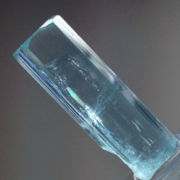
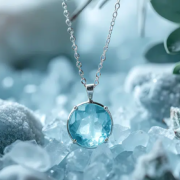
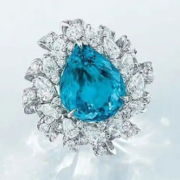


Leave a Reply
Want to join the discussion?Feel free to contribute!